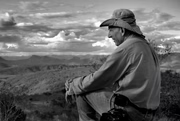
Sebastião Salgado: Meet 5 unmissable books from the photographer
Sebastião Salgado, who died on Friday (23/5), built one of the most relevant and impactful photographic works in the world, marked by the humanistic look and the ability to transform complex social themes into beauty images. In addition to exhibitions and reports, much of its production is eternalized in books that have become a reference not only in photography, but also in the documentation of contemporary history. Read also entertainment remember striking photos of Sebastião Salgado, who died at 81 Brazil Alckmin, Haddad and Margareth regret the death of Sebastião Salgado Celebrities Sebastião Salgado attempted new treatment before Documentary Cinema on Sebastião Salgado was nominated for Oscar: Remember
Check out five books by Sebastião Salgado that condens the best of his trajectory:
Workers (1993)
Considered one of Salgado's most important books, workers are the result of six years of photographer's trips by about 26 countries. The work documents, with powerful black and white images, the toil of men and women in intense manual activities, many of them remnant of ancestral practices. More than a record of manual work, the book is a tribute to human dignity and resistance to the transformations of the modern world.
Exodos (2000)
As a result of more than six years of work in more than 40 countries, exodus is a monumental work in which Salgado records the migratory movements forced by wars, hunger and economic disasters. The book reveals the human dimension of global crises, highlighting the courage and pain of millions of people forced to abandon their land in search of survival. The book is one of the most internationally recognized works, consolidating salty as the visual chronicler of the great tragedies and hopes of the twentieth century.
17 Images



 Close modal.
Close modal.

















Africa (2007)
In this book, Salgado brings together a selection of photographs taken over 30 years of travel through the African continent. The images, in black and white, capture landscapes, cultures, rituals and conflicts, offering a complex and respectful portrait of Africa. The work is marked by the look at the marginalized populations and the attempt to deconstruct stereotypes, revealing the diversity and cultural richness of the continent.
Genesis (2013)
Genesis is one of the most ambitious and celebrated projects of Sebastião Salgado. Over the course of eight years, the photographer has traveled more than 30 regions of the planet – from Antarctic to the Amazon, through the Sahara Desert and the Galapagos Islands – in search of landscapes, animals and peoples who still live according to ancestral traditions. The book is an invitation to contemplate the planet's natural beauty and a manifesto in defense of environmental preservation. The book also marks salty engagement in ecological issues, deepened by the work of the Terra Institute.
Serra Pelada (2019)
This book rescues one of Salgado's most iconic series, held in the early 1980s, when he photographed the impressive gold mining in Serra Pelada, Pará, Brazil. The images, which show thousands of men digging with their own hands in a scenario that resembles human anthills, are now recognized as some of the most emblematic in the history of photography. Serra Pelada is a dramatic portrait of the search for wealth and social inequalities that mark mineral exploitation.
Follow the Metropolis Live on the death of Sebastião Salgado:
